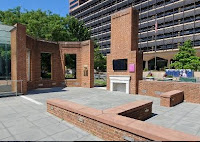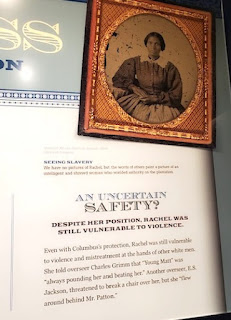I highly recommend CityPASS in every city where available and Philadelphia CityPASS is a member of the program. Passes are available online and can be printed or saved on your mobile device for use at a selection of eleven attractions. There are three pass choices that offer 3, 4 or 5 attractions at rates from $52 to $79. Savings can amount to 50%. A travel guide is offered containing attraction information including hours of operation, safety protocols and entry guidelines. www.citypass.com/philadelphia
Philly PHLASH operates from May to December and is easily the best bargain in town. These gaily-colored buses visit 18 attractions, departing from a scheduled route. Two additional sites, Please Touch Museum and the Philadelphia Zoo are available with an included PHLASH transfer. Visitors can hop on and hop off, buses at 15-minute intervals. A one-day pass is $5.00 and resident seniors, with a Septa Key Card, ride for free. This is also a great way for residence to show guests the city. RidePhillyPHLASH.com
Visitors taking the transfer shuttle obtain wonderful views of Philadelphia’s Fairmount Park. The 2,000-acre green park, one of the largest urban parks in the states, features artworks and several colonial homes, one of which, Belmont Mansion, was an Underground Railroad station and is now a museum. The Philadelphia Zoo, nestled within the park, is the oldest zoo in America. It was chartered in 1859 but the Civil War delayed its opening for fifteen years. It opened with 813 animals; today it exhibits more than 1,500 animals.
Philadelphia was the only colonial city that did not begin as a fort. Quaker William Penn realized that the Leni Lenape Native Americans had long inhabited the land and had a prior claim. He learned some of their language, negotiated and purchased a portion of the land between the Delaware and Schuylkill Rivers. Originally the city was 1,200-acres, 1-mile wide, 2-miles long and laid out in an innovative grid system. Land to the west of the city was reserved for later use. That area, including the cultural corridor known as the Benjamin Franklin Parkway, has since become a tourist draw with a vast number of museums, scientific institutions and architectural attractions.
The Philadelphia Art Museum, chartered in 1876 as part of the Centennial Exposition, anchors the parkway. Situated on the highest point in the city the African American architect Julian Abele of the Horace Trumbauer firm designed the building and a marker outside details Abele’s contribution, based on classical Greek temple architecture. The 240,000 object permanent collection and special exhibitions are displayed throughout more than 200 galleries. www.philamuseum.org
Before leaving the museum visitors love to run up the 72 exterior steps and have their picture taken with the Rocky statue located in a small grove to the right of the steps. The Rocky Tour Experience is newly available on the Bounce app. The immersive tour may be taken solo or with the addition of up to 6 friends on a personal phone. The app includes movie landmarks, cast information and background stories, all set to music from the original soundtrack. With the app you can take the Rocky Step Challenge, racing up the museum steps against Rocky’s time. https://apps.apple.com/us/app/bounce-the-world-is-waiting
Dr. Albert Barnes was born in 1872 in Philadelphia, earned a medical degree at 20 and became a millionaire by 1912. He considered himself both an artist and collector and in 1922 he established the Barnes Foundation and his residence on 12-acres where his art collection was displayed to a limited number of people. In 2012 the foundation moved into a new $150-million museum on the Parkway. The 24-room Barnes Collection houses one of the world’s best Impressionist, Post-impressionist and early Modernist European works, valued at more than $25-billion. His 2,500 objects include 181 Renoirs, 69 Cézannes, 7 van Goghs, 46 Picassos as well as 125 African pieces and additional Native American and metal works. There are more Cézanne paintings than in all the Parisian museums. Barnes was one of the first collectors to amass African objects as pieces of art.
Away from the parkway is one of the countries most haunted sites, Eastern State Penitentiary, featured on several television shows as well as in movies and music videos. This was another of Benjamin Franklin’s ventures. In 1787 he and a group of citizens met to discuss the deplorable conditions at the Walnut Street Jail where all prisoners, regardless of their crime, age or gender were incarcerated together. Inside crime and disease were rampant. Reforms were instituted but the need for a larger prison, based on the Pennsylvania System of repentance, rehabilitation and spiritual guidance, was constructed.
The co-ed prison, then in the suburbs, was completed in 1829. It was designed around a central courtyard with 7 corridors and 2-story cellblocks arrayed around it and stone exterior walls 20-inches thick. The prison was equipped with central heating, toilets and showers in each cell. Prisoners were isolated from each other with their only personal property being a Bible. They were fed and communicated through a hole in the door. Fifty stop tours are self-guided but include an audio tour narrated by Steve Buscemi. Highlights of the tour are “the Hole” and a replica of the cell occupied by Al Capone complete with Oriental rug, radio and other creature comforts. Women were admitted in 1831 and the cellblocks were desegregated in 1961. Eastern State, a National Historic Landmark, closed in 1970 and reopened as an attraction in 1994. Early tourists included the Marquis de Lafayette and Charles Dickens.
No matter how enthusiastic you are about your visit you can’t do it all in a day and most visitors tour Independence National Historic Park on their first trip. Independence Visitor Center, in the heart of the Historic District, is the best place to begin all Independence National Historical Park tours. Here you can get tickets, make reservations, obtain maps and brochures and watch an orientation film.
Independence Mall, known as State House Yard in the 1700s, contains Independence Hall, Old City Hall and Congress Hall. This is the area Washington, Franklin, Jefferson, Hamilton and Adams strolled every day.
The President’s House, official residence of Washington and Adams during their presidencies, is reconstructed using exterior beams that allow access to areas of the structure. The home, across from the Visitor Center, also interprets the story of Washington’s nine enslaved workers. During his stay Washington’s black chef Hercules fled. Martha Washington was so upset about the loss of his cooking skills that she asked Washington to send the militia to locate him. He was never found. Adams did not own slaves.
Liberty Bell Center is located steps away. It was a symbol for abolitionists before the Civil War and after the war it was exhibited around the country to help bring the nation back together. Visitors can take photographs and view both the crack and the inscription from Leviticus, “Proclaim liberty throughout all the land unto all the inhabitants thereof”. www.uwishunu.com.
Philadelphia Savings Fund Society was the first savings bank in the country and in1929, they commissioned the construction of a 491-foot skyscraper that would house their banking and other business activities. The building became the Loews Philadelphia Hotel in April of 2000. Travelers are invited to celebrate this anniversary Sundays - Thursdays in April. Guests will receive 22% off Joseph Anthony Retreat Spa & Salon treatments, off on-site parking and food and beverage en suite or at Bank & Bourbon.
Philadelphia is where the nation’s history really starts. Begin at the beginning and immerse yourself in the sites and sounds of this international city.

























































